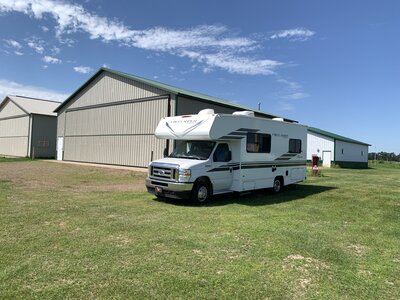RollingManCave
RVF Regular
- Joined
- Aug 10, 2024
- Messages
- 27
- RV Year
- 2021
- RV Make
- Coachman Freelander 22 XG
- RV Model
- 22
- Chassis
- Ford E350
- TOW/TOAD
- 5000
Hi Folks,
Any Help is appreciated!!
2022 Coachman Freelander 22- E350 class C with 4000-watt genset, roof a/c,12 volt fridge/freezer.
Goal 1:
Change House Battery to Lithium 2OO amp hour.
Goal 2:
Add Soler panels and more batteries.
My research so far:
Some motorhomes have the built in capacity for Lithium and some don't.
You can fry your battery, Alternator or have problems with the Genset if you don't have the Lithium capacity built in.
I have little knowledge on DC to DC but his looks like for RV's without a House battery?
Anybody know if I have this capacity built in and can just swap out old battery with Latium? (My unit came "solar ready" but this just looks like for a portable solar unit that is just hooked straight to the battery with no controller).
Any insights on next steps?
Thanks for any insight you can offer!!!
Any Help is appreciated!!
2022 Coachman Freelander 22- E350 class C with 4000-watt genset, roof a/c,12 volt fridge/freezer.
Goal 1:
Change House Battery to Lithium 2OO amp hour.
Goal 2:
Add Soler panels and more batteries.
My research so far:
Some motorhomes have the built in capacity for Lithium and some don't.
You can fry your battery, Alternator or have problems with the Genset if you don't have the Lithium capacity built in.
I have little knowledge on DC to DC but his looks like for RV's without a House battery?
Victron Energy SmartShunt Looks like it might protect alternator?
Lithium Battery Isolation Manager li-bim 225. Looks like it protects Alternator and genset overcharge and you use this to replace factory BIM???Anybody know if I have this capacity built in and can just swap out old battery with Latium? (My unit came "solar ready" but this just looks like for a portable solar unit that is just hooked straight to the battery with no controller).
Any insights on next steps?
Thanks for any insight you can offer!!!













